The arrival of combat drones, these unmanned devices designed to carry out missions in place of fighter planes, is now particularly awaited. These will, in fact, constitute the real pivot of what is described as the 6th generation of combat aircraft, to which the American NGADs, as well as the European NGFs and Tempests, will belong.
If everyone anticipates this inevitable evolution, the way in which these drones will be used, and therefore the way in which they will be designed, still remains very divergent depending on the projects.
Thus, the Russians designed the S-70 Okhotnik-B, a 20-ton combat drone, whose performance, and certainly the price, brings it closer to a traditional combat aircraft. The MQ-25 Stingray developed by Boeing for US Navy aerial refueling missions, has a unit price of $150 million, higher than that of the F/A-18 E/F Super Hornet and the F-35C Lightning II, its two current onboard combat aircraft.
Conversely, the new programs developed, across the Atlantic, in this area, tend to design much more economical combat drones, such as Boeing's MQ-28 Ghost Bat designed in cooperation with Australia, which targets a unit price from $10 to $15 million, while the US Air Force announced, as part of the NGAD program, that it aimed to acquire a fleet of semi-expendable combat drones costing between a quarter and a third of the price of an F-35A, i.e. $22 to $30 million.
It is precisely in this direction that the US Navy, after the very expensive MQ-25 Stingray, now wants to move, with, ultimately, a profound upheaval of the fighter fleet embarked on board American aircraft carriers, as well as paradigms governing the operational and industrial aspects of combat aircraft.
In this section:
Meta-Defense celebrates its 5th anniversary!

- 20% on your Classic or Premium subscription, with the code Metanniv24
Offer valid from May 10 to 20 for the online subscription of a new Classic or Premium, annual or weekly subscription on the Meta-Defense website.
The US Navy wants $15 million combat drones that will only fly 200 hours
It is in this context that the new Collaborative Combat Aircraft, or CCA, program. This was detailed by Rear Admiral Stephen Tedford, who heads the Program Executive Office for Unmanned Aviation and Strike Weapons, or PEO (U&W), at the Navy League's annual Sea Air Space conference, more early this week.
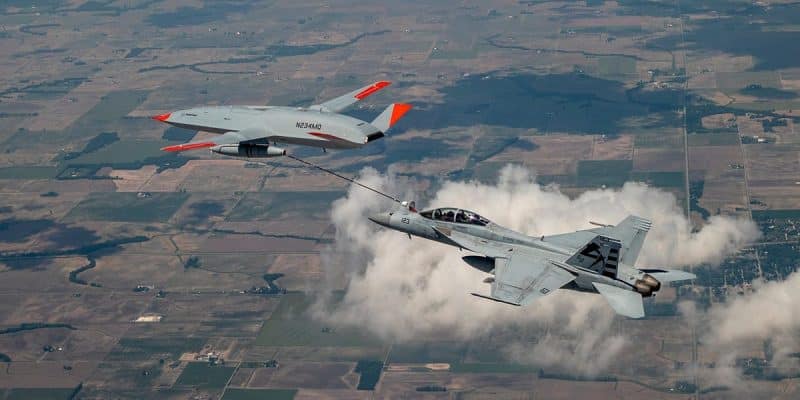
According to him, the US Navy intends not to follow the trajectory of the MQ-25, but to turn towards combat drones much more economical, to accompany its Lightning II, its Super Hornet, and their successor, the future NGAD, which will not enter service before the end of the next decade.
More specifically, the US Navy aims to acquire combat drones whose unit price would not exceed $15 million. Above all, these devices must have very low implementation costs and no maintenance costs.
And for good reason, they will only have to fly, at best, 200 hours, before being used either as a target to attract enemy fire, or as an attack drone. There is no question, in these circumstances, of spending more than is strictly necessary to design and build drones with a limited lifespan.
And to add that ultimately, the US Navy aims for more than 60% of its fleet of combat aircraft to be made up of unmanned aircraft, operating in the service of piloted aircraft, but also independently. .
As for the US Air Force, the entry into service of the first of these drones is planned for the end of the decade, even if the capacities expected at this time will be lower than those targeted by the program, and will require , therefore, the supervision and control of a piloted device.
A coming revolution in the industrial and budgetary model of fighter aviation
The performance and operational capabilities of these future combat drones, regarding heavy drones like the S-70, Loyal Wingmen type drones, or consumable drones, like the Remote Carrier Expendable, have already been discussed in numerous articles published by the specialized press.
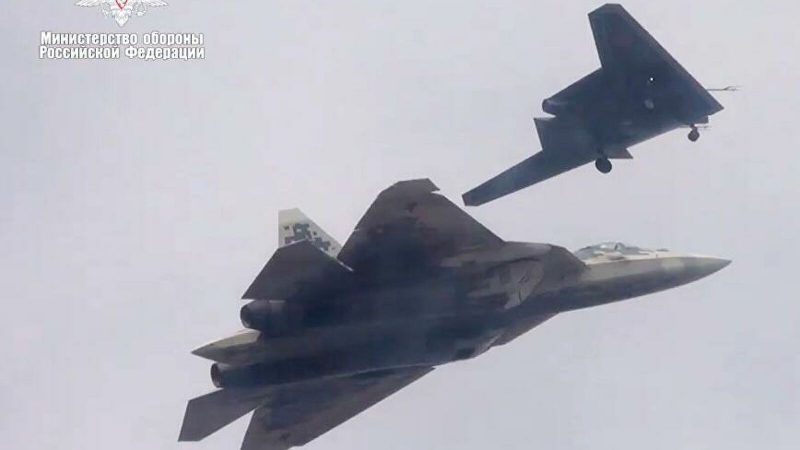
The implications on the industrial and budgetary model, which surround this development, have been much less so. And in the case of the model mentioned by the US Navy, but also by the US Air Force for the NGAD program, these are considerable.
Ownership costs three times lower for a combat drone compared to a combat aircraft
Indeed, a $15 million drone, intended to fly around 200 hours, will only remain in service, at best, for five years, representing an ownership cost of $3 million per year, since maintenance costs are reduced. to 0, and that implementation costs are minimal.
On the other hand, they will have numerous operational attributes, such as the possibility of carrying sensors or weapons, making them an aircraft in their own right, which must be considered as such in the balance of power.
This cost is significantly lower than that of a combat aircraft like the F-35C, the carrier-based version of the Lockheed Martin fighter. With a unit price of €120 million, for an operational lifespan estimated at 40 years (in the best case), it also has an ownership cost of $3 million per year.
On the other hand, the F-35C has very high implementation costs, of the order of $3 to $6 million per year, for 200 annual flight hours, while its evolutionary maintenance costs are just as high, $15 million every five years, or, again, $3 million per year.
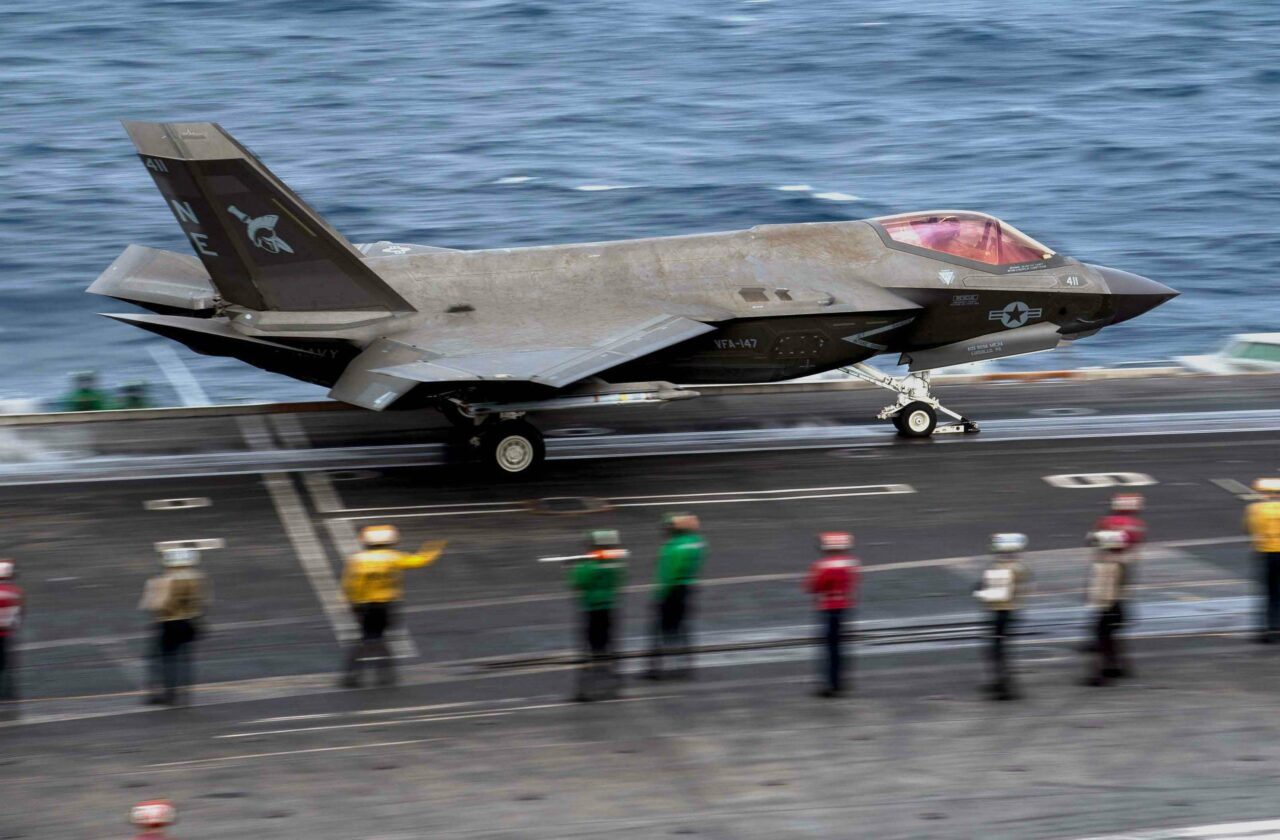
In total, the overall annual costs of owning an F-35C, which are around $9 to $10 million per year, which is consistent with the price of an aircraft over its lifespan, estimated today. today at $400 million, are therefore three times higher than those of the combat drones which will accompany it.
In other words, at a constant budget, a fleet of 50 combat aircraft, supported by 150 combat drones in short generational evolution, for a fighter fleet of 200 aircraft, will cost as much as a fleet of 100 combat aircraft alone .
Radical industrial and capacity implications
The changes in time scales and industrial production, generated by this new model, will have very important implications, both for the industrial aspect and for the capacity and doctrinal aspects.
Indeed, not only will the volume of drones produced be 50% higher than the volume of combat aircraft that they will replace at a constant budget, but, with an operational lifespan of five years, eight successive generations of drones will see the light of day over the lifespan of a combat aircraft, and eleven to twelve generations over its production lifespan.
In other words, the overall volume of drone production will be four to six times greater than the number of combat aircraft on the previous generation, while maintaining an aircraft fleet of 50% of what it was.

The conjunction of these two factors will make it possible to implement a continuous process of generational evolution of drones, much more flexible than it can be for a combat aircraft.
Impossible, in fact, to make an F-16, or a Rafale, a highly stealthy aircraft, or a device capable of flying at Mach 3, while it will be entirely possible to evolve the drone fleet, over short periods of time, and radically, to adapt to operational developments .
We can also imagine, depending on the design costs, that it will be possible to create several specialized drones simultaneously, for example, a stealth one, a very fast one for high altitude, and a straight-winged one for very low flight. altitude and the CAS, within the same generation, or even relying on intergenerational tiling, to smooth R&D efforts.
The air forces will then have a highly reactive tool, to adapt their resources to changing needs, and to the technological and operational challenges of their missions. As for manufacturers, they will have a particularly smooth activity over time, both in terms of R&D and design, and industrial production, allowing much more efficient sizing and reduced risk-taking, for the benefit of more competitive prices. .
Finally, let us note that in a European vision, such a model allows flexible and simplified integration and cooperation of all the industrial players of the old continent, the cursor of technological ambitions and volumes making it possible to adapt industrial capacities to the needs of the armies , as well as export opportunities, in a balanced manner between manufacturers and between states.
The inevitable evolution of the paradigms of the future combat aircraft
The arrival of these drones, expected to radically transform the composition and use of the fighter fleet, will also lead to a profound evolution in the role of the piloted combat aircraft themselves.
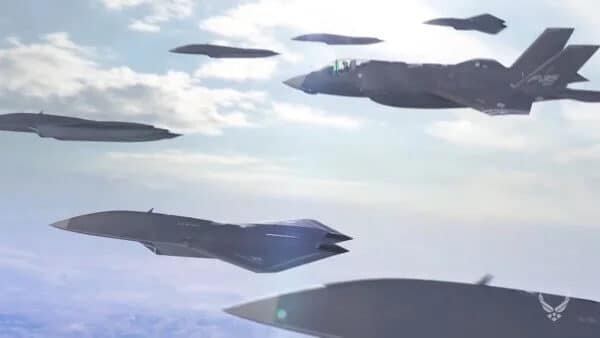
Indeed, until now, combat aircraft had a function of vector of weapon systems, these bringing the sought-after operational effectiveness, whether air superiority with air-to-air missiles, support with bombs and air-to-ground missiles, deep strikes with cruise missiles and glide bombs, or even reconnaissance or electronic warfare, with different pods.
With the arrival of combat drones, it will be the latter which will provide the vector function, the piloted aircraft acting as a coordinator-controller of these remote capabilities, while remaining, as much as possible, outside the area. adverse intervention.
Obviously, these devices will certainly continue, for a time at least, to carry ammunition and action capabilities. However, it is very likely that this function will tend to decline over time, in favor of increasingly efficient and autonomous drones, the combat aircraft having the function, then, of supervising, bordering and coordinating, the action of these drones, in an optimized manner.
We understand, in these conditions, that survivability, but also combat autonomy, and aeronautical capabilities, such as speed or ceiling, and even the comfort of the crew called upon to carry out long-term missions, will then be attributes much more critical than maneuverability, for these piloted aircraft.
France must not miss the march of the combat drone with a limited lifespan
We see the arrival of combat drones which is being prepared, as of today, within the US Navy as well as the US Air Force, the two most powerful air forces on the planet to date, will be accompanied by a real revolution in the very conception of fighter fleets, their doctrines, as well as the industrial balances which will give birth to them.
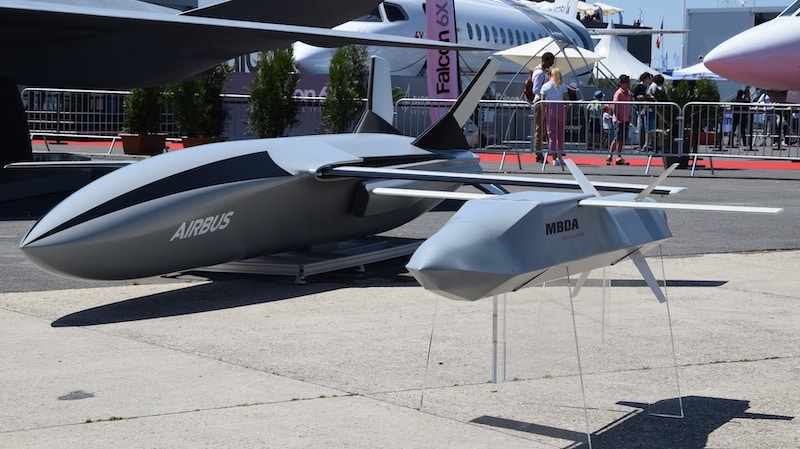
In this area, France seemed to have taken stock of the revolution to come, whether within the framework of the FCAS program with Remote Carrier drones, or around the program Rafale F5, with the announcement, during the LPM 2024-2030 vote, of the design and construction of a combat drone to support this critical evolution of the French fighter.
These announcements seemed to show that Paris had learned the lessons of the French and European false start in the field of MALE drones, having forced the French Armies to turn to American models, to catch up with the capacity need for these essential means in numerous missions. .
Since then, no communication from the Ministry of the Armed Forces, the DGA or the Armed Forces has confirmed that this program has been officially launched and notified to manufacturers.
Even more surprising, Eric Trappier, who heads Dassault Aviation, indicated that it would be necessary to design a heavy drone, weighing 18 to 20 tonnes, to be able to accompany the Rafale in its missions, which is more reminiscent of a substitute capacity for the Mirage 2000, than of the vision developed by the US Navy and the US Air Force, of lighter, semi-consumable, and above all, very economical drones.
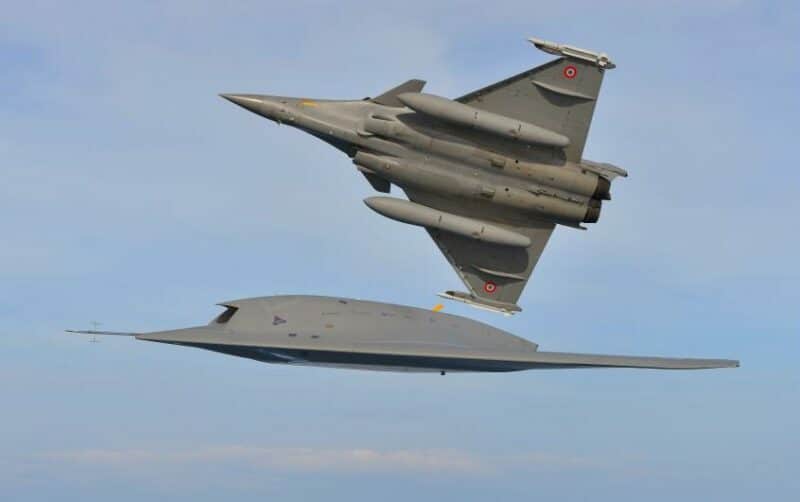
It is now urgent, for the French authorities, and the Armed Forces, Air and Space Forces as well as the National Navy, to outline the objectives targeted for this program, and to initiate developments to give it substance, concomitantly with the arrival of American models.
Otherwise, we can fear that once again, as was the case for the MALE drones, France will allow itself to be overtaken by the American advance in the field, to the point that it will no longer really be possible, and even less relevant from an industrial point of view, to develop national solutions.
Article from April 12 in full version until May 18


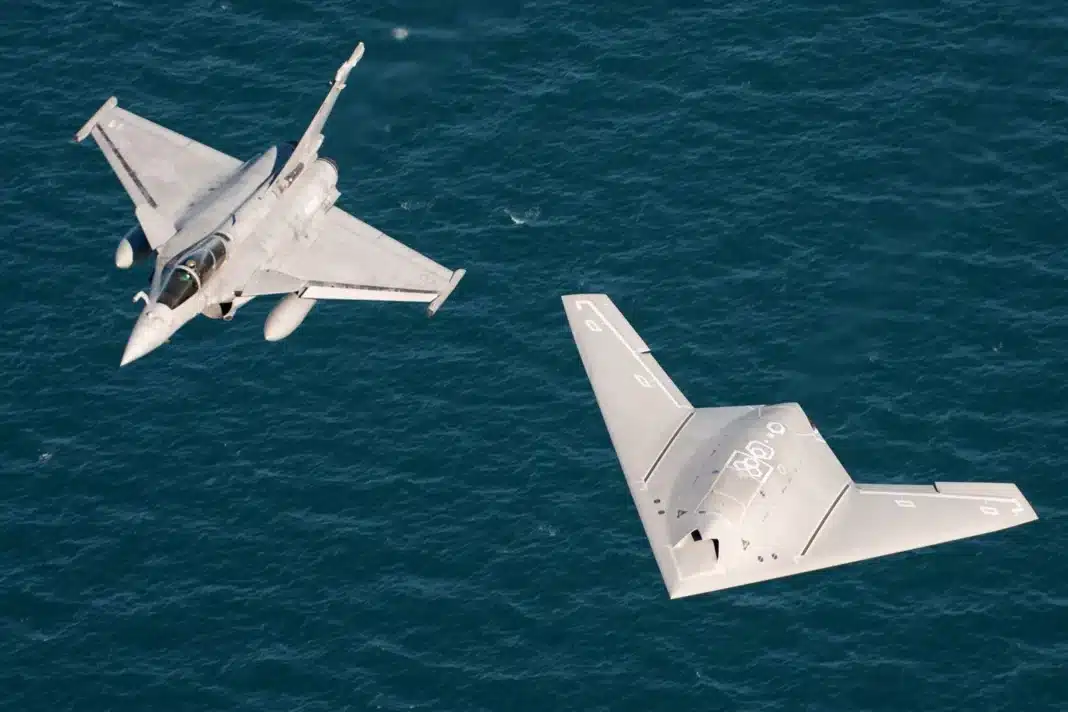
These drones, costing $15 billion, would have what carrying capacity/autonomy and detection/electronic warfare capacity?
The MQ-20 Avenger, which is priced at $15 million, can carry 3 tonnes of weapons, i.e. 1 kg in the hold.